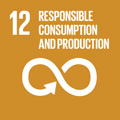- Docente: Andrea Versari
- Credits: 9
- SSD: AGR/15
- Language: Italian
- Moduli: Andrea Versari (Modulo Mod 1) Arianna Ricci (Modulo Mod 2)
- Teaching Mode: Traditional lectures (Modulo Mod 1) Blended Learning (Modulo Mod 2)
- Campus: Cesena
- Corso: First cycle degree programme (L) in Viticulture and Enology (cod. 8527)
Learning outcomes
The student learns the chemicalcomponents of grapes, musts and wines and approachthe reactions that occur in wine during vinification,stabilization, bottling and storage in order to work independently and with a capacity for critical analysis and solved problem approach.
Course contents
Prerequisites: knowledge of basic chemistry and wine analysis is required.
Wine chemistry (Module 1 - 6 CFU)
The course describes the main components of grapes, musts and wines (carbohydrates, acids, nitrogenous substances, enzymes, polyphenols, minerals, aromatic compounds, sulfur dioxide), their chemical characteristics, the main reactions and technological importance, with case study, and pills of statistics applied to the composition of grapes, musts and wines.
Wine packaging (Module 2 - 3 CFU)
Also, will investigate the following topics:
1. Permeation and Migration;
2. Wine tank materials: steel, cement, fiber glass, plastic;
3. Barriques, chips, tannins;
4. Wine packaging: glass, brick, PET, kegs;
5. Shelf-life of wine;
6. Wine closure (cork, elastomers, aluminium);
7. Bottling line;
8. Oxygen and wine;
9. Labelling
Readings/Bibliography
The ability of the student to interact and to take notes during the lecture is fundamental. Besides the syllabus available from the professor and available on 'virtuale.unibo.it', the following textbooks are suggested:
Fundamental for module n. 1:
Ribèreau-Gayon P. et al. Handbook of Enology vol. II
(Edagricole, Bologna).
Additional fo rmodule n. 1:
Margalit Y. Concepts in Wine Chemisty (Eno-One Editrice
UIV).
Usseglio-Tomasset L. Chimica Enologica (AEB, Brescia).
Fundamental for module n.2:
Piergiovanni L., Limbo S. Food
Packaging (Springer).
Teaching methods
The course consists of 9 CFU of which 6 CFU of the principles of
wine chemistry and 3 CFU of packaging and storage of wines. As
part of the total 9 CFU about 6 CFU are of lectures and about
3 CFU of laboratory practice that are conducted at the campus
of Food Science (Cesena). The aim of the practical exercises
is:
- Make the student familiar with the protocol of the
oenological laboratory instrumentation, including safety and
regulation;
- Develop a critical sense of the student in the selection of
parameters and methods for analysis of musts and wines;
- To stimulate the student's ability to recognize the main
characteristics of composition of musts and wines.
"In view of the types of activities and teaching methods adopted, the attendance of this training activity requires all students to carry out modules 1 and 2 in e-learning mode and to participate in module 3 of specific training on safety and health in the workplace. Directions on dates and modalities of attendance of module 3 can be found in the appropriate section of the course of study website."
Assessment methods
REGULAR SITUATION (see below for emergency sitation*)
In order to take the test, the student must always register on AlmaEsami.
The assessment of learning is through a final written
exam, and an oral test.
The written test is
designed to ascertain the candidate's
knowledge and his
ability to solve problems in the context of the issues
addressed. It is assessed by a judgment which should be
positive to allow access to the oral test. The validity of the written
test exceeded is
limited to the appeals of the same examination
session. The oral exam aims to
test knowledge acquisition under the full program of the
course.
The final vote, out of thirty, takes into
account a weighted estimates
reported in both modules (n. 1 and 2).
If no acceptance or refusal is expressed, the vote will be implicitly understood as accepted (silence/assent) and the teacher will proceed with the recording of the vote in accordance with the University Regulations.
*IN CASE OF EMERGENCY (e.g. COVID-19)
The examination test takes place electronically (online) until the emergency has been completed. To take the exam you must have a computer (you cannot use tablets, smartphones or other mobile devices) with audio, microphone, webcam and Zoom software already installed. During the exam you will need to keep your webcam active and share your screen via Zoom.
Zoom Cloud meetings must be installed and tested beforehand. You must create an account with the University credentials (@studio.unibo.it) following the instructions of the University ('How to take a written exam online with Zoom'); it is important to click on 'Sign in with SSO' (i.e. register with the University credentials) and enter the domain 'unibo'.zoom.us.
It is a good approach to test the functioning of the webcam and microphone on the Zoom platform. For those who use a Mac computer, it is also necessary to check in advance how to allow screen sharing and recording.
If the student is unable to comply with these conditions, he/she should contact the teacher promptly, at least 15 days before the exam.
Teaching tools
Teaching in classroom is supported by the use of computers and
projector (ppt slides), whereas the practical exercitations will be
held in laboratory.
Besides the mandatory textbooks availableat the
library,the student will be provived with the
syllabusof the course (pdf in italian) andarticles on
both technical and scientificJournals. Guided visit to
production plant and seminars with expert in the field will be
considered.
Office hours
See the website of Andrea Versari
See the website of Arianna Ricci
SDGs

This teaching activity contributes to the achievement of the Sustainable Development Goals of the UN 2030 Agenda.
